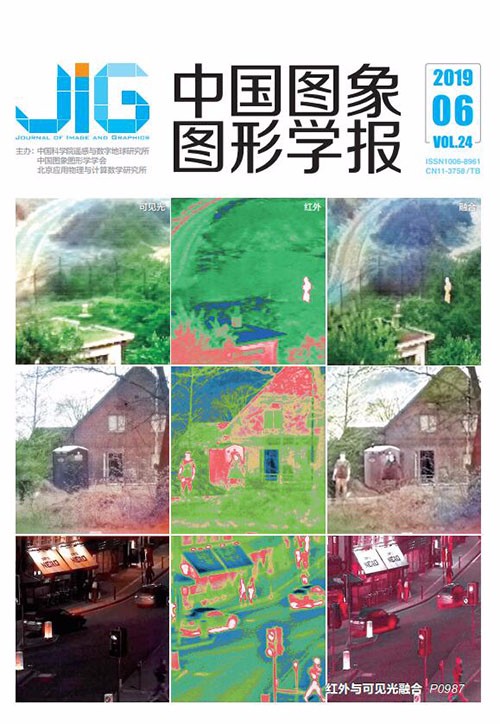
用于快速服装搭配的FMatchNet算法
摘 要
目的 针对现有服装搭配系统中,提取服装图像深度特征进行搭配所需时间过长的问题,提出了一种新的FMatchNet网络提取哈希特征进行服装快速搭配的方法。方法 首先采用快速区域卷积神经网络(Faster-RCNN)方法检测出图像中的服装,用此服装进行搭配可以最大限度地保留服装信息并消除背景信息的干扰。然后用深度卷积神经网络提取服装的深度特征并产生服装的哈希码,采用查询扩展的方法完成服装搭配。模型采用Siamese网络的训练方法使哈希码尽可能保留服装图像的语义信息。另外,由于目前国际上缺少大型时尚服装数据库,本文扩建了一个细粒度标注的时尚服装数据库。结果 在FClothes数据库上验证本文方法并与目前流行的方法进行对比,本文方法在哈希长度为16时,上、下服装搭配方面的准确度达到了50.81%,搭配速度相对于基本准线算法提高了近3倍。结论 针对大规模服装搭配问题,提出一种新的FMatchNet网络提取特征进行服装快速搭配的方法,提高了服装搭配的精度和速度,适用于日常服装搭配。
关键词
FMatchNet algorithm for fast clothing matching
Liu Yujie1, Feng Shihe1, Li Zongmin1, Li Hua2(1.College of Computer and Communication Engineering, China University of Petroleum, Qingdao 266580, China;2.Key Laboratory of Intelligent Information Processing, Institute of Computing Technology, Chinese Academy of Sciences, Beijing 100190, China) Abstract
Objective With the development of artificial intelligence and online shopping, clothing matching based on clothing images is crucial in helping merchants promote sales. An increasing number of young consumers are inclined to buy clothing online, but existing research mainly focuses on clothing search, clothing recommendations, and fashion trends. Quickly, accurately, and effectively matching the right clothing to the clothing that the user has already purchased remains a challenging task. With the development of the economy and the improvement of material level, the clothing style and number are increasing. Therefore, clothing matching among a large number of garments is vital. Aiming at the problem that the existing clothing matching framework is used in fashion clothing matching and the depth feature of clothing image extraction requires a large time overhead, this study proposes a new FMatchNet network for extracting hash features for a fast clothing matching. Method Deep learning is an important development in the field of machine learning and artificial intelligence. At present, deep convolutional neural networks have become one of the most effective means of extracting image features. The early extraction feature method is based on artificial extraction features, such as scale-invariant feature transform, speeded-up robust features, and histogram of oriented gradient. The features extracted by deep neural networks are more accurate than traditional features. By contrast, the use of binary Hashing codes for image features is an effective approach for reducing overhead and increasing computational speed. The core of the clothing mix is the description of the clothing image content. To match the clothing efficiently, the content of the clothing image must be described, and the basic idea is to express the clothing image as a feature vector. In general, the more closely matched the clothing images, the smaller the distance between their feature vectors. Recent studies in many image fields have begun to explore methods for generating Hashing codes on the basis of features extracted by deep networks. This research also applies this idea to study the clothing image representation method combined with deep learning and Hashing code. This study proposes a fast, accurate, and effective clothing matching network, namely, FMatchNet. The faster regional convolutional neural network (Faster-RCNN) method is adopted to detect the clothing area in the image. The clothing area can be used to maximize the original clothing information and eliminate the interference of image background information. Then, the image of the clothing area extracts the depth feature of the garment and the Hashing code of the garment through a two-way deep convolutional neural network. Finally, clothing matching is completed by using the query expansion method. The model applies the Siamese network training method to extract the depth features of the clothing image and the Hashing code extracted by this method, which can preserve the semantic information of the clothing image as much as possible. The Hashing code is used to select the candidate set of clothing matching, and then depth feature is used to rank the clothing matching in the selected clothing matching candidate set. In addition, given the lack of large-scale fashion clothing database in the world, a fine-grained fashion apparel database has been expanded in this paper. The expanded FClothes clothing dataset and dataset images mainly come from the Weibo website, which contains a large number of popular people and high-resolution clothing pictures that meet fashion demands. Finally, the algorithm is experimentally verified on the expanded fine-grained fashion clothing database. Result The method used in this study was verified on the expanded FClothes database and compared with current popular methods. This study compares the 8 bits, 16 bits, and 32 bits Hashing codes, and experimental results show that as the length of the Hashing code increases, the precision of the clothing mix increases. However, the time consumption also increases. When the lengths of the Hashing code are 16 and 32 bits, the matching accuracy of the upper and lower garments is higher than that of the baseline. When the length of the Hashing code is 16 bits, the matching accuracy of the method used in this paper is 50.81% in the upper and lower clothing, and the matching speed is nearly three times higher than that of the basic alignment algorithm. The basic accuracy of the comparison comes from the "Learning visual clothing style with heterogeneous dyadic co-occurrences" of the International Conference on Computer Vision 2015. From this point of view, the accuracy and time of the upper and lower clothing combinations of the algorithm are better than those of the current cutting-edge methods. Conclusion In view of the problem of large-scale clothing matching, this study proposes a new FMatchNet network extraction feature, which improves the precision and speed of clothing matching and is suitable for daily clothing matching.
Keywords
|



 中国图象图形学报 │ 京ICP备05080539号-4 │ 本系统由
中国图象图形学报 │ 京ICP备05080539号-4 │ 本系统由